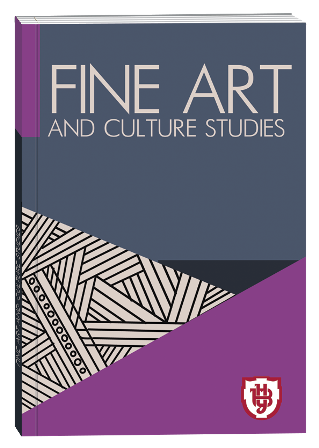THE EVOLUTION OF GILDA'S CHARACTER IN GIOVANNI VERDI'S «RIGOLETTO»: FROM INTONATIONAL SIMPLICITY TO SPIRITUAL DEPTH
DOI:
https://doi.org/10.32782/facs-2025-2-2Keywords:
G. Verdi, «Rigoletto», the image of Gilda, timbre-role, coloratura soprano, interpretationAbstract
The article analyzes the image of Gilda in Giuseppe Verdi's opera Rigoletto in the context of the development of the vocal part and musical dramaturgy of the character. The aim of the study is to identify traditional performing approaches to the interpretation of Gilda's part, as well as to emphasize new semantic and artistic trends that actualize her image in the modern stage embodiment. Particular attention is paid to the analysis of the evolution of Gilda's vocal line throughout the opera, changes in intonation, rhythmic and register characteristics in connection with the dramatic development of the character. The research methodology is based on a combination of musicological analysis (study of the melodic and rhythmic structure of the vocal part, tonal drama, interaction of vocal and orchestral fabric) with a cultural and historical approach that takes into account the peculiarities of aesthetic ideas of the Verdi era. The work also uses the principles of interpretive analysis to assess the continuity of traditions and the latest trends in performance practice. The scientific novelty lies in a comprehensive consideration of the development of Gilda's vocal part as an artistic means of revealing her inner transformation from a naive girl to a moral heroine. It is shown that changes in the melodic structure, the complication of rhythm, the use of certain registers and orchestral colors play a key role in shaping the dramaturgy of the image. It is emphasized that in the role of Gilda Verdi reinterprets the traditional techniques of bel canto, giving them a deep psychological meaning. The main conclusions show that the image of Gilda in Rigoletto is not only the embodiment of the canonical archetype of female self-sacrifice, but also the personification of moral superiority over others. The composer creates a holistic musical trajectory of the character's development, in which the simplicity of the vocal line and virtuoso technique are integrated into a single dramatic idea, revealing Gilda's spiritual growth from innocence to a conscious choice of sacrifice.
References
Ван Юйцзи. Вокал мецо-сопранових партій у творах Дж. Верді і Ж. Бізе. Вісник Національної академії керівних кадрів культури і мистецтв : наук. журнал. 2024. № 2. С. 255–260.
Варварцев М. Між музикою і політикою: опери Верді в Україні (ХІХ ст.). Міжнародні зв'язки України: наукові пошуки і знахідки. 2015. Вип. 24. С. 109-125.
Закрасняна Ж. М. Розвиток вокальної майстерності співака (на прикладі творів Джузеппе Верді). Імідж сучасного педагога, 2020. №2 (191). С. 101–104.
Маркова О. М. Поняття тембру-амплуа і філософії голосу в динаміці музикознавчих досліджень останніх десятиріч. Вісник НАКККіМ. 2023. № 3. С. 122–177.
Муравська О. В. Східнохристиянська парадигма європейської культури і музика XVIII- XX стол: монографія. Одеса, Астропринт, 2017. 564 с.
Чжан Мяо. Жанрово-композиційні детермінанти оперної мови як авторсько-виконавського феномена. Музичне мистецтво і культура: Науковий вісник Одеської національної музичної академії ім. А.В. Нежданової. Одеса: Астропринт, 2018. Вип. 27. Кн. 1. С. 326–336.
Hudson E. Gilda Seduced: A Tale Untold. Cambridge Opera Journal 4, № 3 (1992). P. 229–251.
Kerman J. Verdi and the Undoing of Women. Cambridge Opera Journal 18, № 1 (2006). P. 21–31.
Piave F. M. Verdi's Rigoletto: Complete Italian Libretto ( translated by Ellen H. Bleiler). New York: Dover, 1988. 77 p .
Rutherford S. Verdi, Opera, Woman. Cambridge: Cambridge University, 2013. 303 p.







